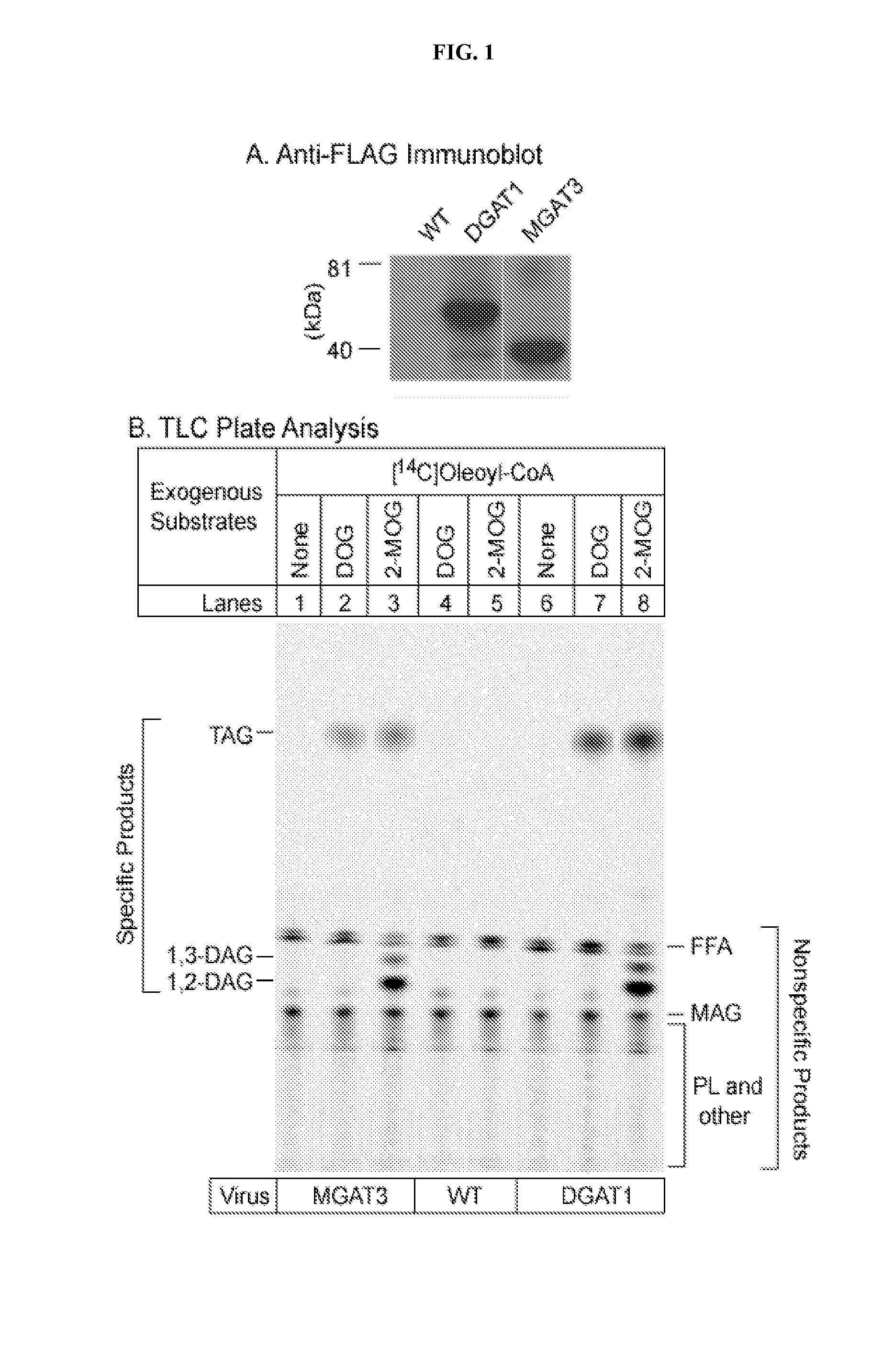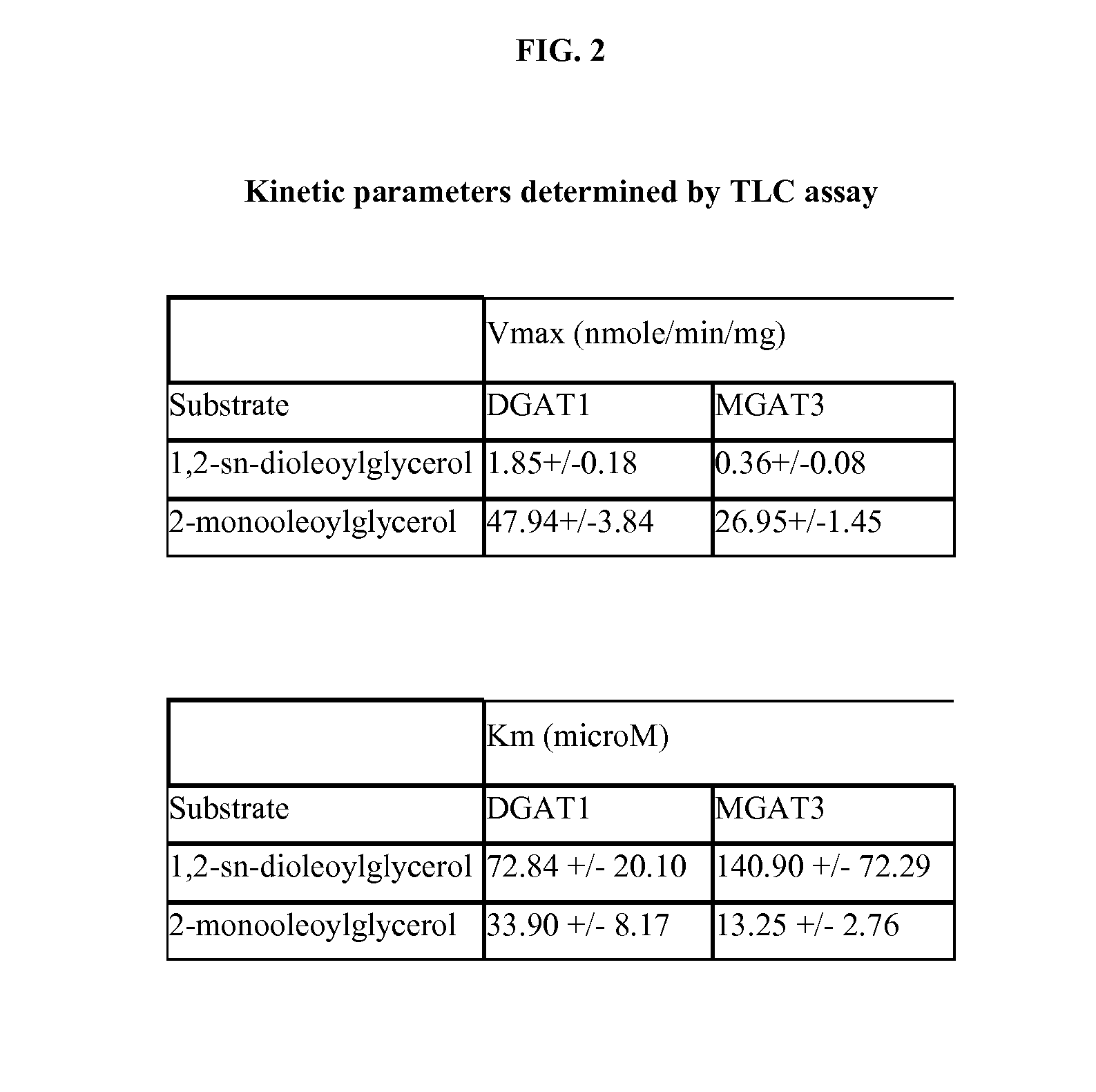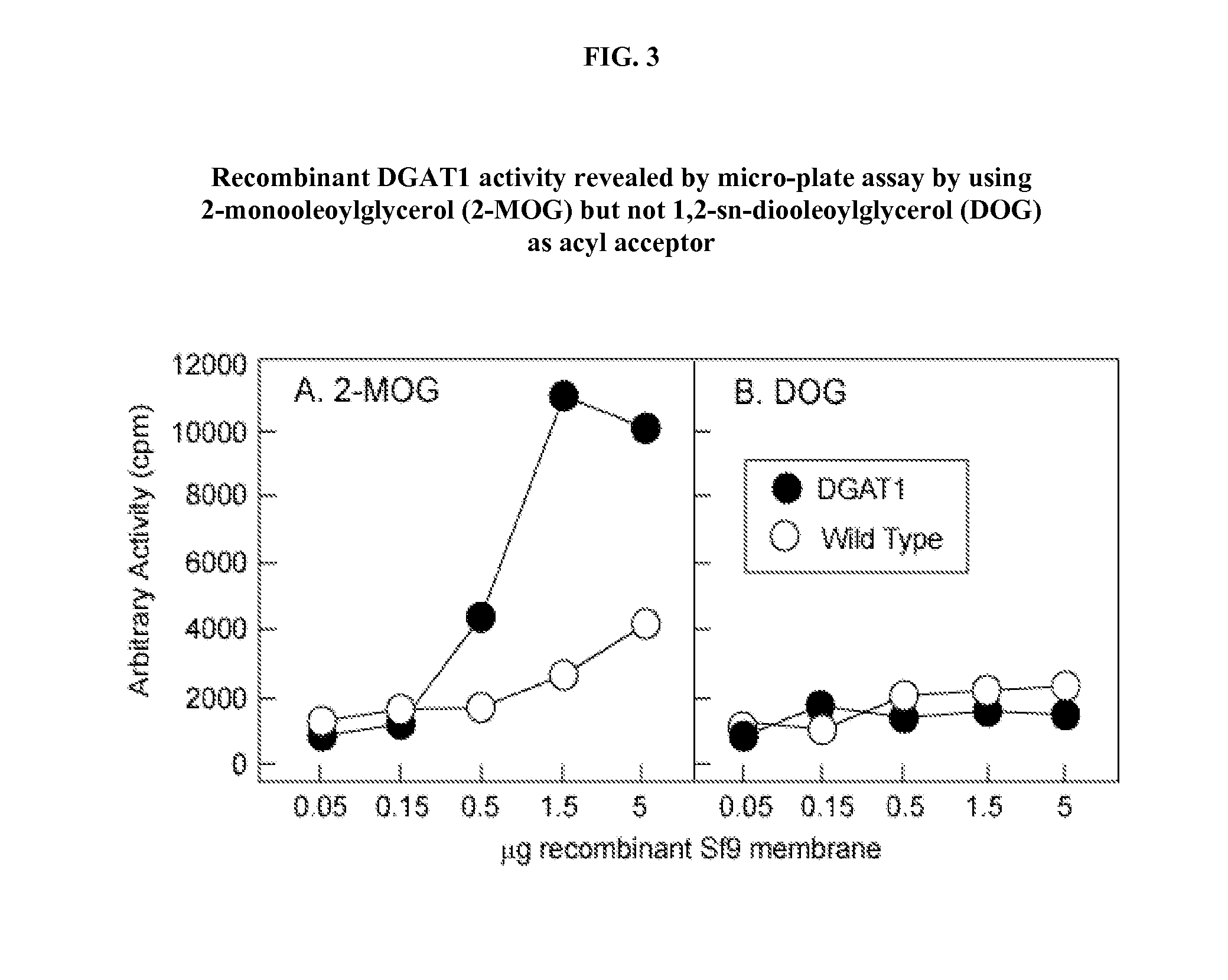Assay for measuring acyltransferase activity
a technology of acyltransferase and activity, applied in the field of high-throughput assays, can solve the problems of difficult development of efficient assays to identify acyltransferase modulators, low biological activity of conventional acyltransferase assays, and inability to use high-throughput screening of compounds that modulate dgat activity, etc., to achieve high-throughput screening
- Summary
- Abstract
- Description
- Claims
- Application Information
AI Technical Summary
Benefits of technology
Problems solved by technology
Method used
Image
Examples
example 1
Acyltransferase Assay Procedure
[0022] Spodoptera frugiperda (Sf9) insect cells were used to generate control membranes (i.e. membranes lacking exogenous acyltransferase(s)) and membranes containing recombinant acyltransferases. By way of example, DGAT1 and MGAT3 are described herein. Suitable Sf9 cell lines are commercially available from the American Type Culture Collection (“ATCC”). Control and DGAT / MGAT membranes were diluted in Buffer A (150 mM potassium phosphate, pH 7.4) at a final concentration 0.1 μg / μl, as measured using a Bradford assay with bovine serum albumin (“BSA”) as a reference standard. Following dilution in Buffer A, the membrane extracts were supplemented with various concentrations of MOG substrate in acetone, yielding a membrane / substrate mixture having a final substrate vehicle concentration of about 5%. Fifteen microliter (15 μl) aliquots of the membrane / substrate mixture (e.g, DGAT1 membranes / substrate, MGAT3 membranes / substrate, and control membranes / subst...
example 2
Screen of XP620 for DGAT1 Activity—TLC and Multiwell Formats
[0024] DGAT1 activity was measured in both a multiwell format (as described in Example 1) and in the traditional TLC assay using a known selective DGAT1 inhibitor, XP620. The data corresponding to this work is described in FIG. 6. XP620 was discovered and synthesized by Bristol-Myers Squibb Company, as reported in (Orland et al., Biochim Biophys Acta. 2005, Oct. 15;1737(1):76-82), which is incorporated herein by reference. Generally, because XP620 is selective for DGAT1, no inhibition of MGAT3 should be (and was not) observed.
[0025] Membranes containing either recombinant DGAT1, or MGAT3 were prepared as described in Example 1. XP620 was added to the respective membrane / substrate mixtures over a series of concentrations ranging from 0 nM of XP620 to about 1 μM XP620. The activity of the membrane-bound DGAT1 and MGAT3 was then measured using the micro-plate assay as described above (FIG. 6, Panel A), or using a traditional...
example 3
Detection and Analysis of Recombinant Acyltransferases
[0029] Immunoblots were generated to verify proper expression of the nucleic acids encoding the recombinant acyltransferases used in Examples 1 and 2. The data from this set of experiments is reported in FIG. 1A. To facilitate detection of recombinant enzymes, a FLAG-epitope tag was fused in-frame at the amino termini of recombinant DGAT1 and / or MGAT3. The vectors encoding the FLAG-tagged human DGAT1 and human MGAT3 were expressed in Sf9 cells as described in Cheng et al., Biochem J. 2001 Nov. 1;359(Pt 3):707-14 and Cheng et al., J Biol Chem. 2003 Apr. 18;278(16):13611-4. As noted previously, the human DGAT1 used herein and reported in the Cheng et al., publications contain a tyrosine at position 129. Membrane extracts derived from wild type baculovirus infected Sf9 cells (WT), cells infected with recombinant human DGAT1 baculovirus (DGAT1), or with recombinant human MGAT3 baculovirus (MGAT3), were subjected to SDS-PAGE and immu...
PUM
 Login to View More
Login to View More Abstract
Description
Claims
Application Information
 Login to View More
Login to View More - R&D
- Intellectual Property
- Life Sciences
- Materials
- Tech Scout
- Unparalleled Data Quality
- Higher Quality Content
- 60% Fewer Hallucinations
Browse by: Latest US Patents, China's latest patents, Technical Efficacy Thesaurus, Application Domain, Technology Topic, Popular Technical Reports.
© 2025 PatSnap. All rights reserved.Legal|Privacy policy|Modern Slavery Act Transparency Statement|Sitemap|About US| Contact US: help@patsnap.com



